|
COVER STORY, JANUARY 2005
GOING GREEN DOWNTOWN:
The environmental benefits of adaptive reuse in an urban
setting.
Glenn Giles
 |
|
Giles
|
|
In a typical year, building construction consumes 30 billion
board feet of lumber, 50 million tons of concrete and vast
quantities of other resources. More and more people —
architects, contractors, government officials and others —
are realizing that it is imperative to change the way we build
and develop land. Choosing construction methods and materials
that are resource-efficient and low in embodied energy is
essential.
One of those methods, adaptive reuse, is great at maximizing
the profit potential of a building site and is also extremely
eco-efficient. Ideally, in any project, the green team should
consist of the builder, the architect/designer, trade contractors
(especially insulation and HVAC representatives), land planners,
suppliers, manufacturers, landscape architects and construction
specialists — the entire crew on the project — as
each brings special expertise to the process.
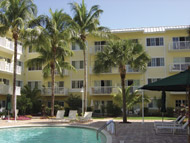 |
|
ARC Avenue architects and
Giles Construction Group recently
converted Pine Crest Village in Fort Lauderdale,
Florida, to condominiums.
|
|
Recently, ARC Avenue architects and the Giles Construction
Group finished adapting Pine Crest Village in the heart of
Fort Lauderdale, Florida. Pine Crest Village exemplifies the
downtown, residential adaptive reuse trend. Built in the late
1960s, Pine Crest was initially a rental apartment community.
The owners made the strategic decision to convert it into
luxury condominiums rather than demolishing and rebuilding.
The following are just some of the environmental benefits
of this project.
Reduction of Resources Used and Waste Produced
Since adaptive reuse projects may use most, if not all, of
the existing building’s infrastructure, it dramatically
cuts down the amount of concrete and lumber (materials that
are taken from the existing ecosystem) used for the project
as compared to new construction. The key is that it recycles
the existing building materials already used. Adaptive reuse
also reduces the amount of demolished-building waste that
currently clogs our nation’s landfills with reusable
materials. Finally, there is a noticeable reduction in the
energy consumption needed with adaptive reuse when compared
to tear-down/build-new projects, not to mention that the fewer
number of heavy trucks needed for any project means far less
fuel consumption and the reduction of carbon monoxide to the
existing micro-climate.
Responsible Energy Use
Energy efficiency should be the cornerstone of any environmental-friendly
building program, as it was with the Pine Crest project. We
upgraded the mechanical systems (air conditioning, lighting)
to more efficient ones. Insulated-glass windows with Low-E
coatings were installed to control the indoor temperature
and help reduce the time and power needed to run the air conditioning
unit. Ensuring that the HVAC system was properly designed
and the right size also lead to greater energy efficiency
for the building.
Conservation of the Greenspace
The cost of demolition and then rebuilding is very expensive.
As Pine Crest Village was an adaptive reuse project, the cost
for the redesign and renovations was significantly lower and
the developers were able to make a fine profit on their money
by enlarging and enhancing the units within the current footprint
of the building. Due to this, we were able to retain the acre
of lawn and trees on the 5-acre property, where a minimum
of one-third of that greenspace would have been sacrificed
in the name of profits if this had been a tear-down/build-new
project. In short, if the existing structures had been totally
demolished, a much denser — and less attractive and marketable
— property would have been developed.
Improving the Micro-Climate Air Quality
Already we had staved off a negative effect on the micro-climate
air quality by retaining the land that was undeveloped. But
we felt that simply conserving the already-existing verdant
areas wasn’t enough; we enhanced the landscape plan to
provide for increased grass coverage and additional trees,
which increases the oxygen content in the immediate surroundings.
Air quality was further enhanced by reducing 21 percent of
living spaces during the adaptive reuse project (Pine Crest
went from 323 units to 255). This reduces traffic and car
trips, leading to less carbon monoxide in the immediate micro-climate.
By reducing the number of residents and increasing the greenspace,
the air quality was significantly improved. This proved to
be another selling point in the urban community.
Maintaining Habitat, Ecosystems and Water
Quality
Again, given that adaptive reuse doesn’t change the current
building footprint, Pine Crest had no impact on the local
habitat, ecosystem or water quality. The highly sensitive
greenways and buffer zones were left intact, preserving the
local habitat and ecosystem integrity. Additionally, as impervious
surfaces were not expanded, the Pine Crest project preserves
the local greenspace area used to capture rainfall at a constant,
maintaining the local water quality at its current purity
levels.
The techniques executed at Pine Crest Village have created
tangible environmental improvements. Naturally, each builder,
remodeler or architect must evaluate and decide which green
advantages best fit what they do. For ARC Avenue and Giles
Construction, the Pine Crest Village project demonstrated
to us that the environmental advantages implemented in an
adaptive reuse program are diverse and effective — and
can even be profitable.
Glenn Giles is president of ARC Avenue Inc. and Giles
Construction Group of Hollywood, Florida.
|
MAJORCA LUXURY APARTMENTS
Fort Myers, Florida
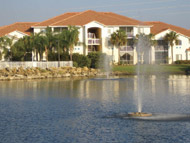 Majorca
248 LLC recently purchased Majorca Luxury Apartments
in Fort Myers from Majorca Joint Venture with plans
to convert the property to condominiums. Majorca features
248 Class A garden-style apartments on 18.87 acres.
The 96 percent-occupied community includes 498 surface
parking spaces, 60 detached garages and 30 carport spaces. Majorca
248 LLC recently purchased Majorca Luxury Apartments
in Fort Myers from Majorca Joint Venture with plans
to convert the property to condominiums. Majorca features
248 Class A garden-style apartments on 18.87 acres.
The 96 percent-occupied community includes 498 surface
parking spaces, 60 detached garages and 30 carport spaces.
JBM Realty Advisors represented the buyer in the $24.25
million transaction. Paul Sands and Jim Garinger of
VIP Commercial-TCN Worldwide and Mel-Re Associates represented
the seller.
|
|
THE TIDES ON HOLLYWOOD BEACH
Hollywood Beach, Florida
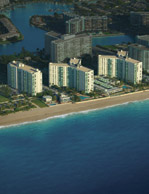 MCZ/Centrum
Florida has purchased Oceancrest Beach in Hollywood
Beach. The property includes three 16-story towers located
at 3801, 3901 and 4001 S. Ocean Dr. The new owner plans
to renovate and convert the rental property into a condominium
community offering 943 one-, two- and three-bedroom
homes. MCZ/Centrum
Florida has purchased Oceancrest Beach in Hollywood
Beach. The property includes three 16-story towers located
at 3801, 3901 and 4001 S. Ocean Dr. The new owner plans
to renovate and convert the rental property into a condominium
community offering 943 one-, two- and three-bedroom
homes.
MCZ/Centrum Florida is a partnership between two Chicago-based
developers, Centrum Properties and MCZ Development. Archstone-Smith
Trust sold the buildings for $160 million; Jay Massirman
of CB Richard Ellis brokered the deal. |
|
VALENCIA APARTMENTS
Miami
Atlanta-based Vista Realty Partners has formed a joint
venture and acquired Valencia Apartments in Miami for
$50 million. The 294-unit luxury community features 564
parking spaces within an attached, self-contained parking
garage. The venture plans to convert the project to condominiums
with prices ranging from $150,000 to $275,000.
The property is located near the South Miami Metrorail
Station, Downtown Miami, Coral Gables, the University
of Miami, Kendall and Airport West. Corus Bank provided
acquisition and redevelopment financing of approximately
$45 million. |
|
LE CLUB AT OLD CUTLER
Miami
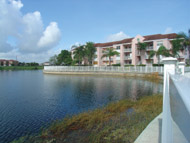 Le
Club Development LLC is converting Le Club at Old Cutler,
a 332-unit gated rental complex at 8630 S.W. 212th St.
in Miami, into a condominium community. One- and two-bedroom
units will be priced from $129,900 to $167,900. Guillermo
Feliz of KOM is upgrading the 15-acre property and enhancing
its features. The lakeside community encompasses 14
garden-style buildings and a clubhouse. Le
Club Development LLC is converting Le Club at Old Cutler,
a 332-unit gated rental complex at 8630 S.W. 212th St.
in Miami, into a condominium community. One- and two-bedroom
units will be priced from $129,900 to $167,900. Guillermo
Feliz of KOM is upgrading the 15-acre property and enhancing
its features. The lakeside community encompasses 14
garden-style buildings and a clubhouse.
|
|
OCEAN GROVE
Ponte Vedra, Florida
Prospect Capital Group and Perimeter Realty are converting
Arbor Club Apartments into a gated luxury condominium
community called Ocean Grove. One-, two- and three-bedroom
homes — each with private beach access — are
priced from $125,000. Todd Cohen of Primary Capital Advisors
arranged the acquisition and conversion loan. |
|
401 BLU
Miami’s North Beach
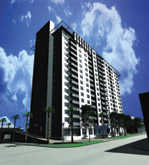 Comprehensive
Management Services (CMS) is converting the 206-unit
rental building at 401 69th St. in Miami’s North
Beach area into a for-sale condominium building called
401 BLU. The original structure of the 16-story building
will be preserved, and more than $7 million in renovations
will be made to the interior components of the building’s
amenities and units. Condo prices range from the high
$100,000s to more than $400,000. Comprehensive
Management Services (CMS) is converting the 206-unit
rental building at 401 69th St. in Miami’s North
Beach area into a for-sale condominium building called
401 BLU. The original structure of the 16-story building
will be preserved, and more than $7 million in renovations
will be made to the interior components of the building’s
amenities and units. Condo prices range from the high
$100,000s to more than $400,000.
CMS purchased the building, originally called Byron Hall
Apartments, from Byron Hall Ltd. for $28 million last
year. LEM Mezzanine provided acquisition financing. |
|
THE HAMPTONS AT METROWEST
Orlando, Florida
Tarragon South Development Corporation and Sunvest Communities
LLC are converting Park Avenue Apartments in the MetroWest
area of Orlando to condominiums. The property will be
renamed The Hamptons at MetroWest. As of the beginning
of this month, 375 of the 743 units at The Hamptons are
available for purchase with prices starting in the low
$100,000s. The Hamptons boasts several diverse living
options: one-, two- and three-bedroom homes are available
in a variety of styles, including garden flats, dual-entry
townhomes with attached and detached garages, and SoHo
lofts. |
©2005 France Publications, Inc. Duplication
or reproduction of this article not permitted without authorization
from France Publications, Inc. For information on reprints
of this article contact Barbara
Sherer at (630) 554-6054.
|
